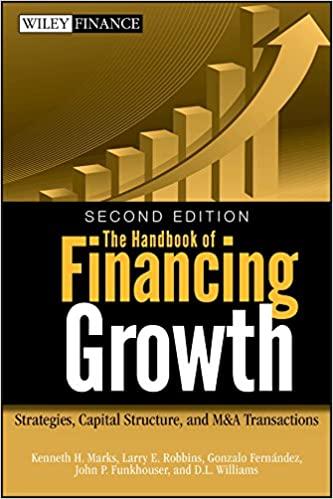Question
With the below and attached data: Current Stock Price: $76.35 Current Annual Dividend Per Share: 1.20 Using the three financial statements, calculate the five-year historical
With the below and attached data:
Current Stock Price: $76.35
Current Annual Dividend Per Share: 1.20
Using the three financial statements, calculate the five-year historical average for Columbia's return on equity (ROE = net income/total stockholders' equity) and average dividend payout rate (Dividend paid/net income).
6. To determine the stock value based on the dividend-discount model: a. Build a timeline in Excel for five years. b. Forecast the next five annual dividends based on the current dividend amount (from 2) and the five-year growth rate (from 4). c. Determine the long-term dividend growth rate using Eq. 9.12., and Columbia's retention rate (1- average payout rate) and expected return on new investments (use average ROE). d. Use the long-term growth rate to determine the stock price for year four using Eq. 9.13. e. Determine the current stock price using Eq. 9.14.
7. To determine the stock value based on the discounted free cash flow method: a. Forecast the free cash flows using the historic data from the financial statements to compute the five-year average of the following ratios: i. EBIT/Sales: Because Morningstar does not report EBIT, calculate EBIT from EBITDA (Income Statement) by subtracting Depreciation and Amortization (Statement of Cash Flow) ii. Net Property Plant and Equipment/Sales iii. Net Working Capital (excluding cash)/Sales b. Build a timeline for the next six years. c. Forecast future sales based on the most recent year's total revenue growing at the five-year growth rate (from 4) for the first five years. Use a long-run revenue growth rate of 3% for year six. d. Under the assumption that the ratios in part (a) remain constant, use the average ratios computed in part (a) to forecast EBIT (Sales * EBIT to Sales ratio), Net Investment (change in Sales * PPE to Sales ratio), and Increases in NWC (change in sales * NWC to Sales ratio) for the next six years. e. Forecast free cash flow for the next six years using Eq. 9.20 and the current corporate tax rate of 21%. f. Estimate the terminal enterprise value in year five using the free cash flow in year six and Eq. 9.24. g. Determine the enterprise value of the firm as the present value of the free cash flows. h. Determine the stock price using Eq. 9.22.
8. Compare the stock prices from the two methods to the actual stock price. What recommendations can you make as to whether clients should buy or sell Columbia stock based on your price estimates?
9. Explain to your boss why the estimates from the two valuation methods differ. Specifically, address the assumptions implicit in the models themselves as well as those you made in preparing your analysis. Why do these estimates differ from the actual stock price of Columbia?
Step by Step Solution
There are 3 Steps involved in it
Step: 1

Get Instant Access to Expert-Tailored Solutions
See step-by-step solutions with expert insights and AI powered tools for academic success
Step: 2

Step: 3

Ace Your Homework with AI
Get the answers you need in no time with our AI-driven, step-by-step assistance
Get Started


